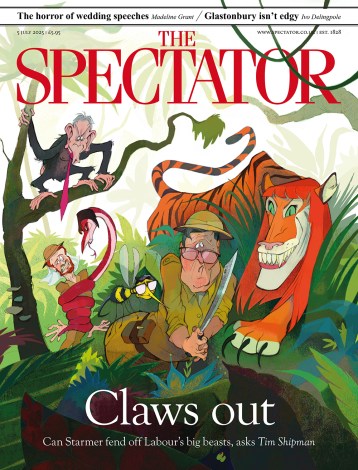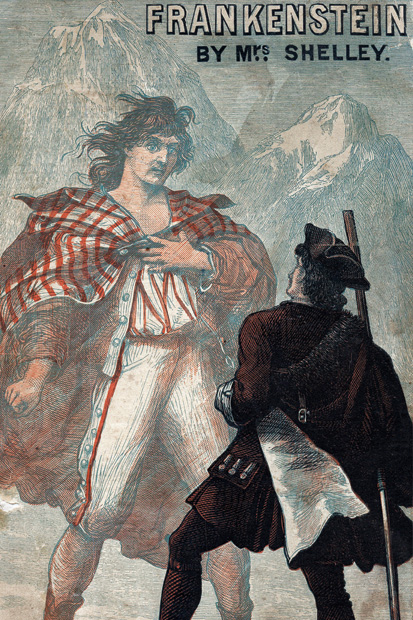It is perhaps the most celebrated house-party in the history of literary tittle-tattle: a two-house-party to be precise. Byron and his doctor/companion/whipping-boy John Polidori in the grand Villa Diodati overlooking Lake Geneva. The Shelleys (Percy and Mary) and Mary’s stepsister Claire Clairmont a short walk away in the modest Maison Chapuis. The cat’s cradle of sexual crossed lines. The dark and stormy nights. Byron’s proposal that they should each write a ghost story. The creation, by Mary Shelley, of Frankenstein. The conception of poor, short-lived Allegra, child of nonchalant Byron (‘When a girl comes prancing to you at all hours there is only one way’) and bold, silly, self-deluding Claire.
The story has been told over and over again; by the participants themselves; by each of their various biographers; by feminist scholars eager to strip Mary Shelley of her self-invented disguise as the devoted, self-abnegating helpmeet and widow to a genius and to instate her as a major Romantic author; by a legion of sufferers from Byro-mania (a mental illness first named by Byron’s wife, and still endemic both within and outside academe); and perhaps most luridly by Ken Russell in a deliciously absurd film in which Mary and Claire (both of whom, as contemporary portraits reveal, wore their hair neatly pinned and their waists corseted) run wildly around a semi-ruined mansion in wispy negligees, their tresses streaming and their lily-white necks laid bare for vampires to prey upon.
There is a reason why the story has been so often told. As Jane Austen (these wayward young people’s wiser contemporary) and every soap-opera scriptwriter knows, you have to get your characters together — in a village, an East London square, a lakeside villa — before they can kindle each other into a plotline. Once you do that, the possibilities are all but endless.
Andrew McConnell Stott has found a novel and illuminating way of treating the storylines which came together that summer of 1816. He shifts the emphasis away from the literary lions, Byron and Shelley, to Polidori and Clairmont, the paid hanger-on and the self-deluding humiliated groupie, and so makes of it a parable about fame — the delusions which feed it, the cruelty it occasions, the disenchantment which follows on the lifting of its spell.
Frankenstein’s wasn’t the only literary monster to have been generated by the lake. Polidori persevered with his story, The Vampyre, without which we would not have had Count Dracula and all the other suave, gentlemanly bloodsuckers. The novel’s publication, though, was problematic. It was pirated by one Henry Colburn, a tiny man who dressed in boy’s clothes and startled his fellow publishers by setting up a previously unheard-of thing, a ‘publicity department’.
Colburn knew that what sells a book is not its literary quality but the celebrity of its author’s name, so he presented The Vampyre as being ‘A Tale by Lord Byron’. A robbery had been perpetrated, but against whom? Which was the more valuable property — Byron’s name or Polidori’s creation? Each of the two authors felt aggrieved, but while Byron scoffed at the impertinence, Polidori was stricken. In the novel, a high-minded young man loses his true love and his sister to the sinister Lord Ruthven. Furthermore, Ruthven — charismatic and overbearing as Byron could also be — extorts from him a vow of silence. In his literary imagining, and in real life, Polidori is deprived of a voice by his more famous friend.
McConnell Stott’s book opens with a wonderfully apposite vignette of Byron lying full-length on the grave of a forgotten poet in order to try out how it feels to have been famous once, and then to have lost both life and celebrity. From this dramatic, perfect start — in which gothic posing and real dread mingle — the author continues con brio. His ingenious narrative structure neatly plaits the converging lines of the characters’ trajectories, and opens out where appropriate onto a wider scene, to describe Flemish water transport (torpid), the realities of the operating theatre (gruesome) or the Romantic cult of failure.
His prose is racy and elegantly simple for the most part but fizzes occasionally into a display of lexicographical fireworks. He uses his sources with a nice sardonic distance, wittily juxtaposing Polidori’s poetic maunderings with Byron’s tart put-downs to ridiculous effect, or making a lively drama out of Clairmont’s determined propositions and Byron’s increasingly evasive responses — a drama which begins as farce and ends, not as tragedy, but more painfully, as bleak absurdism.
Stott refers to Polidori as John, while calling Byron and Shelley by their surnames, as though poor Pollydolly (as Byron called him) was a footman or a child. He may have been foolish enough to be inordinately flattered when Byron treated him as an equal, but he was not as silly as Byron liked to pretend. He was a hard-working, earnest and serious young man and better-looking — in the Byronic manner — than Byron himself.
Mary Shelley, daughter of Mary Wollstonecraft and William Godwin, might be a princess of the intelligentsia, but Polidori’s family would prove no less illustwrious in the next generation: the Rossettis, Dante Gabriel and Christina, were his nephew and niece. Byron ridiculed his writing and — cruelly playing on his infatuation with Mary Shelley — tricked him into spraining his ankle and (what was worse) making a fool of himself by jumping off a balcony in an attempt to impress her. Only joking; only teasing. But for Polidori these humiliations were serious. He killed himself by swallowing prussic acid at the age of 25.
Claire Clairmont, by contrast, outlived them all, but her child Allegra died in the convent where Byron had dumped her. In McConnell Stott’s fresh and engaging version of these intertwined well-known stories, the glamour of Romantic genius is shadowed by real pain — not the theatrical melancholy of a Childe Harold or of Shelley’s passionate outcry against injustice in the abstract, but the shaming, truly agonising pain of rejection and failure.






Comments